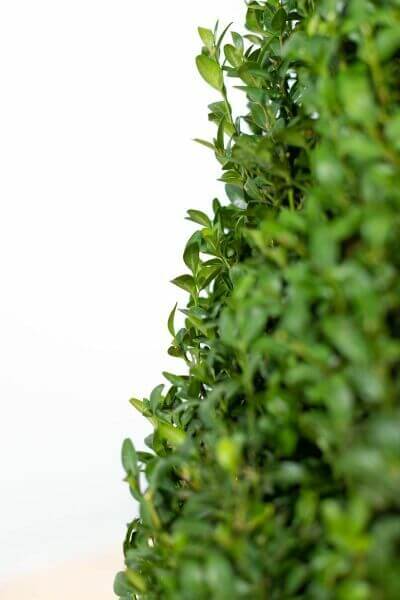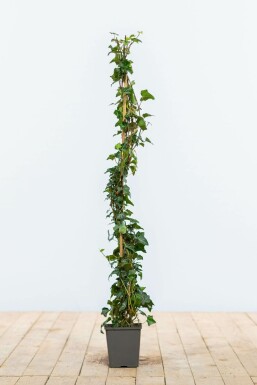Best Hedging Plants For Regular Pruning
Best Hedging Plants For Regular Pruning
Blog Article
Hedging Plants For Butterfly Gardens
Boost your garden's appeal with lavish hedge varieties such as Yew (Taxus), Thuja, Laurel, Photinia, and Bamboo, commemorated for their structural integrity and ecological advantages.
Yew and Thuja offer evergreen protection and winter durability, while Laurel offers fast development and broad, fragrant leaves.
Photinia includes seasonal beauty with its vibrant red foliage, and Bamboo provides a low-maintenance, tranquil ambiance.
These hedges improve air quality, lower noise, and produce tranquil, personal spaces.
Proper planting, spacing, and upkeep make sure energetic growth and environmental consistency.
Check out how these lush varieties can raise your garden's appeal and well-being.
Key Takeaways
Transform Your Garden With Lush Hedge Ranges
- Select Yew for its thick, evergreen development and unparalleled longevity.
- Select Laurel for its quick development and broad leaves, ensuring quick personal privacy.
- Pick Photinia for its lively seasonal foliage, which turns a striking dark red.
- Make use of Bamboo for a low-maintenance, winter-hardy hedge with visual appeal.
- Area plants 2-3 per meter and prune regularly for optimal growth and health.
Popular Hedge Plants
When transforming a garden with rich hedge varieties, it's important to think about popular hedge plants such as Yew, Thuja, Laurel, and Photinia due to their special attributes and advantages.
Yew (Taxus) is extremely respected for its durability and dense, green growth, making it a prime choice for withstanding landscapes.
Thuja is kept in mind for its evergreen foliage and robust winter season strength.
Photinia includes seasonal vibrancy with red leaves that darken with time, developing vibrant visual appeal.
Laurel provides fast growth and fragrant, broad leaves, ideal for quick privacy.
Additionally, Bamboo is an excellent option for atmosphere, providing a low-maintenance, winter-hardy choice that enhances the garden's aesthetic with its elegant, swaying walking canes.
These choices accommodate a variety of horticultural needs and choices.
Benefits of Garden Hedges
Garden hedges offer a multitude of advantages, making them an important addition to any landscape. These natural barriers are cost-effective to implement and supply considerable wind defense, improving air circulation and adding to noise reduction. The thick foliage of hedges like Thuja and Beech guarantees privacy by blocking visibility, creating a secluded and peaceful environment.
Hedges also play an essential role in microclimate guideline, providing a steady environment that promotes plant development and lessens temperature changes. Their intricate leaf structures filter pollutants, enhancing air quality and contributing to a healthier garden ecosystem.
Additionally, hedges master sound reduction, soaking up and deflecting sound waves to lower ambient noise levels. This double performance of supplying both visual and acoustic privacy enhances the overall serenity and visual appeal of any garden.
Planting and Maintenance Tips
For an effective hedge, meticulous preparation of the planting area is vital. Ensure the soil has appropriate pH and drain to support strong root development.
Space the plants properly for the chosen species. Water the hedge often throughout its preliminary growth phase, changing as required with seasonal modifications.
Implement a methodical bug control and illness prevention strategy, using chemical or natural treatments when necessary. Routinely examine for aphids, termites, and fungal infections.
Apply mulch to maintain wetness and reduce weeds. Seasonal pruning promotes thick growth and air circulation, important for plant health.
Following these guidelines will help you cultivate a dynamic, properly maintained hedge that boosts the appeal of your garden.
Spacing and Cutting Standards
Spacing and Cutting Standards
Proper spacing and cutting are vital for cultivating healthy, aesthetically appealing hedges. Sufficient spacing makes sure each plant gets adequate nutrients, light, and air flow.
Follow these standards for optimum hedge upkeep:
- Spacing: Position hedge plants 2-3 plants per meter to motivate robust development.
- Pruning Strategies: Routine pruning is necessary for keeping desired hedge height and shape. Trim new development in summer season and cut down older wood throughout winter.
- Seasonal Care: Adjust trimming schedules and methods according to seasonal requirements to make sure plant health.
- Hedge Height: Frequently screen and trim to preserve the wanted hedge height and attain consistent aesthetic appeals.
Following these actions will guarantee your hedge prospers, improving both the appeal and functionality of your garden.
Picking the Right Hedge
Picking the Right Hedge
Selecting the proper hedge includes assessing aspects such as fully grown height, foliage density, and environmental strength. Effective hedge plant selection needs understanding each types' development characteristics and site-specific flexibility.
For example, Yew (Taxus) offers outstanding longevity and thick growth, while Thuja is significant for its winter season resilience. Additionally, thinking about upkeep requirements is important; fast-growing species like Laurel or Privet need regular cutting, whereas low-maintenance options like Bamboo or Ivy may be more effective for those looking for very little upkeep.
Ecological aspects such as soil type, light availability, and moisture conditions need to likewise guide the selection process. This cautious approach guarantees the picked hedges will flourish, offering both aesthetic and functional benefits to the garden landscape.
Shipment and Planting Guidance
To guarantee your hedge plants flourish, they need to be delivered by specialized couriers and planted without delay upon arrival.
Follow these important actions for effective planting:
- Soil Preparation: Improve the soil with raw material to improve drain and nutrient material.
- Planting Depth: Produce a trench two times the width and equal to the depth of the root ball.
- Watering Techniques: Water thoroughly after planting, keeping the soil regularly wet but not saturated.
- Mulching: Apply a layer of mulch to keep wetness and reduce weeds.
Customer Assistance and Service
Offered the important role of prompt assistance in horticultural pursuits, our customer assistance team is available six days a week through telephone, email, and social media to provide professional suggestions and promptly address any concerns. Their dedication to fast action times ensures client fulfillment by solving inquiries connected to plant health, optimum planting approaches, and upkeep schedules.

-----------------
Within 24 hr
Social Media
This thorough support system, reinforced by an outstanding 9.3/ 10 consumer ranking, highlights our dedication to enhancing the gardening experience for each customer.
Often Asked Questions
For How Long Does It Take for Hedge Plants to Develop?
Hedge plants normally need one to 3 years to end up being totally developed, with the precise period varying by species and growing conditions.
Efficient care during this crucial period is essential for robust growth. Consistent watering, watchful weed control, and appropriate fertilizer application Additional resources are pivotal in promoting strong root advancement.
For instance, fast-growing species like Laurel may develop faster, while slower-growing ranges such as Yew might take longer. Diligent maintenance speeds up the facility procedure, leading to healthy and dense hedges.
What Are the very best Hedge Plants for Privacy?
The concern of the very best hedge plants for privacy involves examining evergreen and deciduous options.
Evergreen hedges like Thuja, Laurel, and Cypress supply year-round protection, guaranteeing constant personal privacy.
On the other hand, deciduous hedges such as Beech use seasonal privacy, shedding leaves in cooler months.
Secret upkeep suggestions for personal privacy hedges consist of routine trimming, fertilizing in spring, and appropriate spacing-- typically 2 to 3 plants per meter.
Additionally, consistent watering and persistent weed elimination are crucial for promoting healthy, thick growth.
Can Hedge Plants Draw In Wildlife to My Garden?
Yes, hedge plants can bring in wildlife to your garden by supplying essential advantages like shelter, food, and nesting websites, thus enhancing regional biodiversity. Yew, holly, and laurel are exceptional for bring in birds, while ivy supports a variety of pests.
Nevertheless, it is very important to note that there are some drawbacks, such as increased maintenance to handle bugs and regular upkeep. Thoroughly choosing and preserving hedge ranges can help balance these advantages and downsides, ultimately cultivating a dynamic and sustainable community in your garden.
Exist Any Blooming Hedge Plants Available?
Yes, there are flowering hedge plants offered that can boost the appeal of your garden.
For instance, Elaeagnus, also called Olive Willow, produces aromatic white flowers in the fall, including a touch of elegance.
Photinia, another popular choice, showcases dynamic red leaves that mature into an abundant green, creating a vibrant visual effect throughout the seasons.
To make sure these plants flourish, it's important to practice appropriate pruning strategies and seasonal maintenance, such as cutting brand-new development in the summer season and cutting back in the winter season.
These procedures will help keep the health and aesthetic appeal of your flowering hedges.
How Do I Avoid Insects in My Hedge Plants?
To prevent insects in hedge plants, utilize natural bug control techniques and keep proper hedge care. Introduce helpful insects like ladybugs, which take advantage of damaging bugs, to create a well balanced environment.
Routinely inspect your hedges for signs of problem and immediately get rid of any affected parts to prevent the spread. Ensure the health of your hedges by applying balanced fertilizers and offering appropriate water.
Make use of mulching to maintain soil moisture and proper spacing to decrease plant stress and promote robust development. These practices jointly assist in decreasing bug concerns and keeping a healthy hedge.
Conclusion
In essence, picking the ideal hedge ranges such as Yew, Thuja, and Laurel can change any garden into a serene sanctuary. These plants offer year-round greenery, improve aesthetic appeal, and offer useful advantages like sound reduction and wind security.
Proper planting techniques, precise spacing, constant watering, and seasonal trimming are important for optimal development.
Reliable shipment services and skilled client support make sure a seamless experience from purchase to planting, making it easier than ever to raise your outdoor space.
Garden hedges use a multitude of advantages, making them an important addition to any landscape. These natural barriers are affordable to implement and supply considerable wind protection, boosting air flow and contributing to noise decrease. The dense foliage of hedges like Thuja and Beech makes sure privacy by blocking exposure, producing a secluded and tranquil environment.

Pruning Methods: Routine pruning is vital for preserving preferred hedge height and shape. Trim new growth in summer and cut back older wood throughout winter season.
Report this page